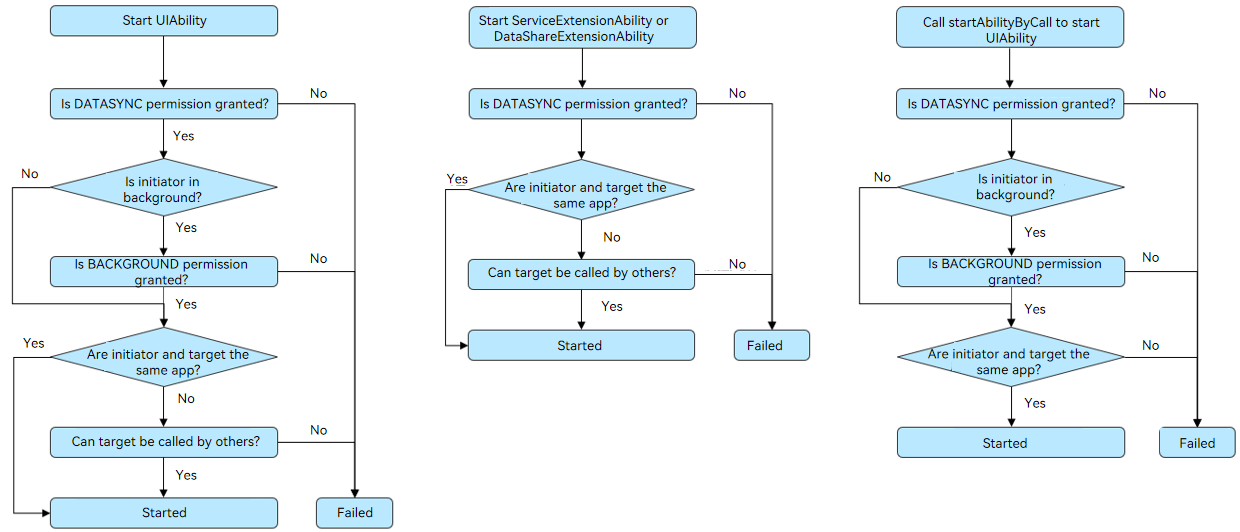harmony 鸿蒙Component Startup Rules (Stage Model)
Component Startup Rules (Stage Model)
Component startup refers to the behavior of starting or connecting to an application component.
Start the UIAbility, ServiceExtensionAbility, and DataShareExtensionAbility components. For example, you can use startAbility(), startServiceExtensionAbility(), startAbilityByCall(), and openLink().
Connect to the ServiceExtensionAbility and DataShareExtensionAbility components. For example, you can use connectServiceExtensionAbility() and createDataShareHelper().
General Component Startup Rules
To deliver a better user experience, the system restricts the following behavior:
A background application randomly displays a dialog box, such as an ads pop-up.
Background applications wake up each other. This type of behavior occupies system resources and increases power consumption, or even causes system frozen.
A foreground application randomly redirects to another application, for example, redirecting to the payment page of another application. This type of behavior poses security risks.
In view of this, the system formulates a set of component startup rules, as follows:
- Before starting a component of another application, check whether the component can be called by others.
If the exported field of the component is set to true, the component can be called by other applications. If the field is set to false, the component cannot be called by other applications. If this is the case, you must also verify the permission ohos.permission.START_INVISIBLE_ABILITY, which is available only for system applications. For details about the exported fields, see abilities.
- Before starting a UIAbility component of a background application, the caller must verify the permission ohos.permission.START_ABILITIES_FROM_BACKGROUND, which is available only for system applications. For 2-in-1 devices and tablets, if an application has created a floating window in the foreground, it can start other abilities without verifying this permission after it transitions to the background.
NOTE
An application is considered as a foreground application only when the application process gains focus or its UIAbility component is running in the foreground.
- Before using startAbilityByCall() to start a component running on another device, verify the permission ohos.permission.DISTRIBUTED_DATASYNC.
The preceding component startup rules take effect since API version 9. Familiarity with these rules helps you prevent service exceptions.
Intra-Device Component Startup Rules
The rules for starting components on the same device vary in the following scenarios:
Starting the UIAbility component
Starting the ServiceExtensionAbility and DataShareExtensionAbility components
Using startAbilityByCall to start the UIAbility component

Inter-Device Component Startup Rules
The rules for starting components on a different device vary in the following scenarios:
Starting the UIAbility component
Starting the ServiceExtensionAbility and DataShareExtensionAbility components
Using startAbilityByCall to start the UIAbility component

你可能感兴趣的鸿蒙文章
harmony 鸿蒙Obtaining Reasons for Abnormal Application Exits
harmony 鸿蒙UIAbility Backup and Restore
harmony 鸿蒙Using Explicit Want to Start an Application Component
harmony 鸿蒙Introduction to Ability Kit
harmony 鸿蒙AbilityStage Component Container
harmony 鸿蒙Accessing a DataAbility
harmony 鸿蒙Accessing a DataShareExtensionAbility from the FA Model
harmony 鸿蒙Common action and entities Values (Not Recommended)
- 所属分类: 后端技术
- 本文标签: